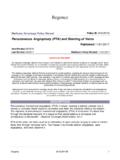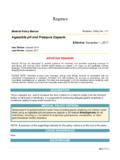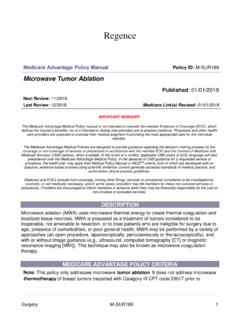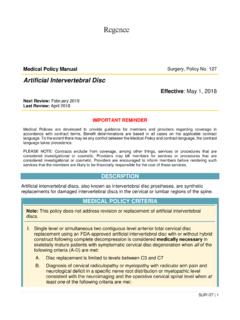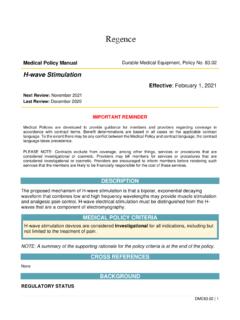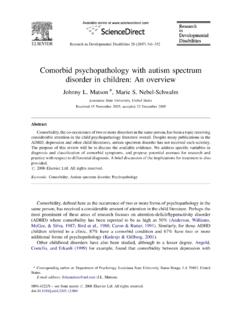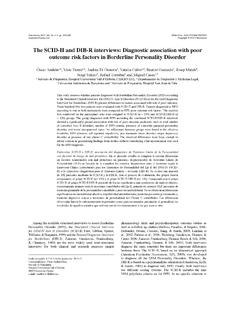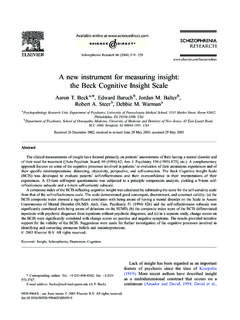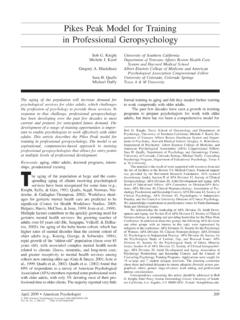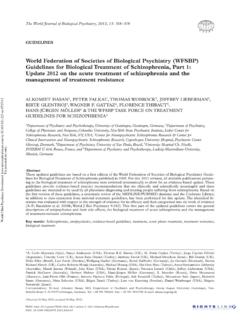Transcription of Bariatric Surgery - Regence.com
1 SUR58 | 1 Medical Policy Manual Surgery , Policy No. 58 Bariatric SurgeryEffective: May 1, 2018 Next Review: December 2018 Last Review: January 2018 IMPORTANT REMINDER Medical Policies are developed to provide guidance for members and providers regarding coverage in accordance with contract terms. Benefit determinations are based in all cases on the applicable contract language. To the extent there may be any conflict between the Medical Policy and contract language, the contract language takes precedence. PLEASE NOTE: Contracts exclude from coverage, among other things, services or procedures that are considered investigational or cosmetic. Providers may bill members for services or procedures that are considered investigational or cosmetic. Providers are encouraged to inform members before rendering such services that the members are likely to be financially responsible for the cost of these services. DESCRIPTION Bariatric Surgery is a major surgical intervention which aims to reduce weight, eliminate or improve comorbid conditions, and maintain weight loss in morbidly obese patients who have failed to achieve weight loss through lifestyle modifications.
2 MEDICAL POLICY CRITERIA Notes: Member contracts for covered services vary. Member contract language takes precedent over medical policy. of the following general criteria ( -D.) must be met for Bariatric Surgery to beconsidered for coverage:A. At the start of the medically supervised, nonsurgical weight reduction program,one of the following must be met:1. BMI greater than or equal to 40 kg/(meter squared); or2. BMI greater than or equal to 35 kg/(meter squared) with at least one of thefollowing comorbid conditions which have not responded to medicalSUR58 | 2 management and which are generally expected to improve as a result of obesity surgical treatment: a. Diabetes mellitus b. Hypertension c. Coronary artery disease d. Obstructive sleep apnea B. Documentation of active participation for at least 6 consecutive months in a structured, medically supervised nonsurgical weight reduction program. A comprehensive commercial weight loss program is an acceptable program component, but it must be approved and monitored under the supervision of the healthcare practitioner providing medical oversight.
3 Comprehensive weight loss programs generally address diet, exercise and behavior modification, , Weight Watchers. Documentation from the clinical medical records must indicate that the structured medical supervision meets all of the following criteria: 1. Occur during at least 6 consecutive months within the 24 months prior to the request for Surgery ; and 2. Include at least three visits for medical supervision, occurring at intervals of no longer than four months apart, , at the start, middle and end of the 6-month weight loss program; and 3. Be provided by an MD, DO, NP, PA, or RD under the supervision of an MD, DO, NP, or PA; and 4. Include assessment and counseling concerning weight, diet, exercise, and behavior modification. C. Preoperative evaluation to include both of the following: 1. A licensed psychologist, psychiatrist, LCSW/LICSW, Licensed Masters level counselor, or NP in a behavioral health practice, documents the absence of significant psychopathology that can limit an individual's understanding of the procedure or ability to comply with medical/surgical recommendations ( , active substance abuse, eating disorders, schizophrenia, borderline personality disorder, uncontrolled depression); and 2.
4 Clinical documentation, by either a psychological or surgical evaluation, of willingness to comply with preoperative and postoperative treatment plan. D. Age greater than or equal to 18 years. II. Procedures A. Sleeve gastrectomy as a stand-alone procedure, or adjustable gastric banding, consisting of an adjustable external band placed around the stomach, may be considered medically necessary in the treatment of morbid obesity when all of the following criteria are met: 1. Not currently requiring regular treatment for gastroesophageal reflux disease (GERD); and SUR58 | 3 2. Procedure is not in combination with takedown of fundoplication; and 3. All of Criteria I. (A-D) above are met. B. Gastric bypass using a Roux-en- Y a nastomosis with an alimentary limb of 150 cm or less may be considered medically necessary in the treatment of morbid obesity when all criteria I. (A-D) are met. C. Sleeve gastrectomy, adjustable gastric banding, gastric bypass using a Roux-en- Y anastomosis with an alimentary limb of 150 cm or less is not medically necessary in the treatment of morbid obesity when criteria or are not met.
5 III. The vertical banded gastroplasty is no longer a standard of care and is therefore considered not medically necessary. IV. Adjustable gastric banding, gastric bypass using a Roux-en- Y anastomosis, and sleeve gastrectomy are considered investigational for the treatment of any condition other than morbid obesity, including but not limited to gastroesophageal reflux disease or gastropareses. V. The following surgical procedures are considered investigational for the treatment of morbid obesity: A. Distal ( antrectomy) or partial (other than standard sleeve gastrectomy) gastrectomy performed with or without any of the following: 1. Gastroduodenostomy 2. Gastrojejunostomy 3. Roux -en- Y reconstruction B. Hiatal hernia repair, including repair of sliding or paraesophageal hernia C. Gastric restrictive procedure, without gastric bypass, for morbid obesity; other than vertical banded gastroplasty or sleeve gastrectomy VI. The following surgical procedures are considered investigational for the treatment of any condition, including but not limited to morbid obesity and gastroesophageal reflux disease: A.
6 Mini -gastric bypass (gastric bypass using a Billroth II type of anastomosis) B. Distal gastric bypass (long limb gastric bypass, , >150 cm) C. Biliopancreatic bypass ( , the Scopinaro procedure) D. Biliopancreatic bypass with duodenal switch E. Laparoscopic duodenal switch with single anastomosis F. Two -stage Bariatric Surgery procedures ( , sleeve gastrectomy followed by gastric bypass, sleeve gastrectomy followed by biliopancreatic diversion, removal of gastric band followed by sleeve gastrectomy or gastric bypass) G. Adjustable gastric banding with existing gastric bypass or sleeve gastrectomy, or other Bariatric surgical procedure. H. Parietal cell separating gastrojejunostomy I. Laparoscopic gastric plication SUR58 | 4 VII. Endoscopic procedures A. Endoscopic procedures as the primary Bariatric procedure are considered investigational. B. Endoscopic procedures, except for balloon dilatation of anastomotic strictures, are considered investigational to treat complications of primary Bariatric Surgery , including but not limited to weight gain due to a large gastric stoma or large gastric pouch and dumping syndrome.
7 Examples of endoscopic devices/procedures include but are not limited to the following: 1. StomaphyX (EndoGastric Solutions, Inc) 2. ROSE procedure (Restorative Obesity Surgery , Endoscopic) 3. EndoCinch (Bard) 4. EndoSurgical Operating System (EOS) (USGI Medical, Inc.) 5. Sclerotherapy of stoma 6. Endoscopic gastroplasty 7. Endoscopically placed duodenal-jejunal sleeve 8. Endoscopic stoma revision 9. Gastric balloon systems 10. AspireAssist 11. OverStitch Endoscopic Suturing System (Apollo Endosurgery, Inc.) VIII. Reoperation may be considered medically necessary when either criteria A. or B. are met: A. Reoperation with revision of a Bariatric procedure ( adjustable gastric band, gastric bypass, or sleeve gastrectomy) or adjustable gastric band removal may be considered medically necessary when one or more of the following documented significant complications is present: 1. Bowel perforation, including band erosion 2. Band migration (slippage), that cannot be corrected with manipulation or adjustment.
8 Records must demonstrate that manipulation or adjustment to correct band slippage has been attempted. 3. Leak 4. Obstruction. Records must demonstrate that imaging has been performed. 5. Staple-line failure (such as, Gastro-gastric fistula) 6. Weight loss to 80% or less of ideal body weight 7. Band infection B. R emoval of adjustable gastric band and conversion to a gastric bypass using a Roux -en- Y anastomosis with an alimentary limb of 150 cm or less may be considered medically necessary when criteria I. A-D are met. Note that criteria I. A- D must be met during the period after placement of the adjustable gastric band. SUR58 | 5 IX. Reoperation which does not meet criteria VIII. above, is considered not medically necessary, including but not limited to reoperation for the following indications: A. Early satiety B. Nausea C. Pat ient dissatisfaction D. Gastroesophageal reflux disease (GERD) E. Conversion, which does not meet criteria or above, of a prior procedure to a different procedure (such as, laparoscopic adjustable banding to gastric bypass or sleeve gastrectomy, sleeve gastrectomy to gastric bypass, or a gastric bypass to a sleeve gastrectomy) NOTE: A summary of the supporting rationale for the policy criteria is at the end of the policy.
9 POLICY GUIDELINES REQUIRED DOCUMENTATION: It is critical that the list of information below is submitted for review to determine if the policy criteria are met. If any of these items are not submitted, it could our impact review and decision outcome: 1. Clinical documentation of a medically supervised nonsurgical weight reduction program or comprehensive commercial weight loss program approved and monitored under the supervision of the healthcare practitioner providing medical oversight, that includes: A. BMI at the start of the program B. comorbid conditions that have not responded to medical management and are generally expected to improve as a result of obesity surgical treatment C. The program occurred during at least six consecutive months within the 24 months prior to request for Surgery D. At least three visits for medical supervision, occurring at intervals of no longer than four months apart E. Assessment and counseling concerning weight, diet, exercise and behavior modification F.
10 Documentation the program was provided by an MD, DO, NP, PA, or RD under the supervision of an MD, DO, NP, or PA 2. Preoperative evaluation by a licensed psychologist, psychiatrist, LCSW/LICSW, Licensed Masters level counselor, or NP in a behavioral health that includes: A. Documentation of the absence of significant psychopathology that can limit an individual's understanding of the procedure or ability to comply with medical/surgical recommendations ( , active substance abuse, eating disorders, schizophrenia, borderline personality disorder, uncontrolled depression) SUR58 | 6 3. Preoperative evaluation by either a psychological or surgical evaluation, of willingness to comply with preoperative and postoperative treatment plan 4. History and Physical including current medications 5. For Reoperation, Revision or Removal requests: A. Complication present B. Interventions attempted. NOTE: For band migration (slippage), that cannot be corrected with manipulation or adjustment.
